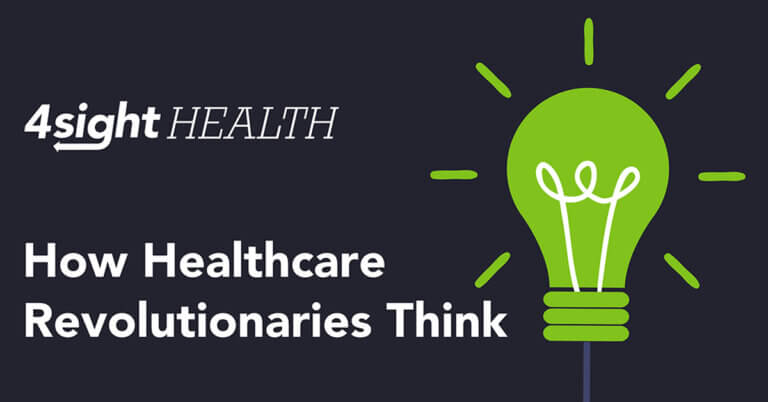July 11, 2018
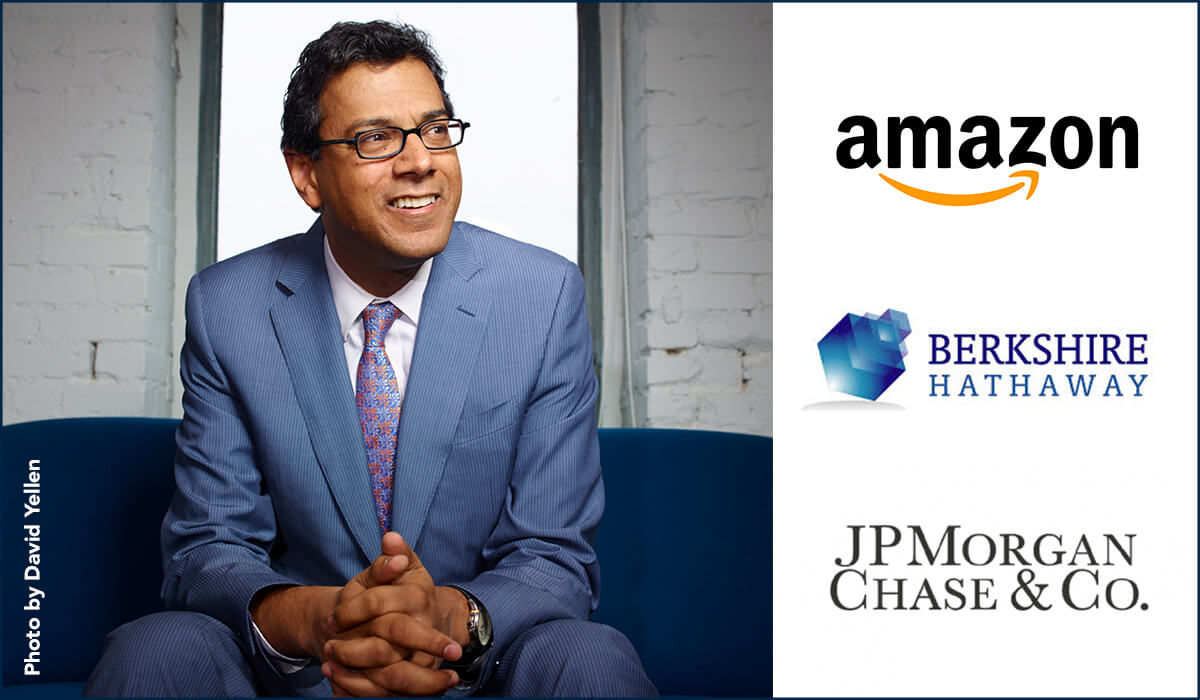
Gawande’s Gift: Re-Imagining Corporate Wellness and Healthcare
Amid much fanfare, the Amazon, Berkshire Hathaway, JP Morgan health venture (ABJ) announced on June 20th that its new CEO will be acclaimed author and surgeon Atul Gawande. Gawande starts his new job this week at ABJ’s new headquarters in Boston, Gawande’s hometown. We wish you well Atul. Your country needs you.
Gawande is an inspired, if somewhat surprising, choice. He lacks business experience but is a gifted communicator. Gawande applies a surgeon’s care, technocratic expertise and storyteller magic to inform and engage his expansive audience on health policy, economics and patient experience. Atul Gawande is healthcare’s most effective thought leader.
America has historically separated healthcare and wellness. This is a mistake. Fixing healthcare (right care, right time, right place, right price) without addressing the country’s exploding chronic disease is suicidal.
The current trajectory leads to ever-greater medical expenditure, lower productivity, increasing inequality, increasing social isolation and less happiness. No one wants this dystopian future for America.
To “win,” ABJ needs to compete on health as well as become a better buyer of healthcare services. An expansive mandate to reshape ABJ’s health and wellness practices will enable Gawande to play defense (health promotion, disease prevention) as well as offense (purchasing high-value care).
Healthcare and wellness must go together like love and marriage. Healthcare is desperate for leaders who can imagine, develop and sell alternative ways to provide and pay for wellness and healthcare. Engaging people in managing their health is the great American challenge.
Enter Atul Gawande. Fixing healthcare requires both individual and organizational behavioral change. Leadership is persuasion. Edicts and gimmicks won’t work. Gawande’s challenge is to connect with, inspire, and guide ABJ’s members on their individual health journeys.
As Gawande begins, he must focus ABJ’s efforts on consumer and employer “jobs to be done” within the context of individual ambitions in health and the company’s programmatic capacities. Fortunately, his billionaire bosses (Jeff Bezos, Warren Buffett and Jamie Diamond) are taking the long view. Success rests on achieving meaningful outcomes incrementally over time.
CONCEPT, LAUNCH AND CEO SEARCH

In January, the ABJ triumvirate fired a shot that shook the healthcare industry. Legendary CEOs Bezos, Buffet and Dimon announced their creation of an independent venture to manage the healthcare of ABJ’s combined million-plus covered lives. In the press release announcing the venture, Warren Buffet made this harrowing comment,
“The ballooning costs of healthcare act as a hungry tapeworm on the American economy. Our group does not come to this problem with answers. But we also do not accept it as inevitable.”
In the wake of the announcement, healthcare stocks plummeted. “Amazoning healthcare” took on new meaning.
Since then, however, ABJ struggled to find the right CEO, a person born to the job in the same way Bezos was born to create the world’s premier digital store.
Candidates with large organization experience (David Feinberg, Andy Slavitt) and start-up experience (Todd Park, Owen Tripp) emerged and disappeared. The industry got back to business. Healthcare stocks stabilized. Year-to-date, S&P’s Health Care Select Index is up slightly more than the broader S&P 500 Index.
Behind the scenes, ABJ intensified its CEO search and selected Gawande. Gawande is as close to a rock star as exists in healthcare. His words have power. In accepting his new responsibilities, Gawande established high purpose and set the right aspirational tone.
“I have devoted my public health career to building scalable solutions for better healthcare delivery that are saving lives, reducing suffering, and eliminating wasteful spending both in the US and across the world.
Now I have the backing of these remarkable organizations to pursue this mission with even greater impact for more than a million people, and in doing so incubate better models of care for all. This work will take time but must be done. The system is broken, and better is possible.”
“Better is possible.” U.S. healthcare cannot transform until the buyers and users of healthcare services change their habits. ABJ is a great place to experiment with new ways to purchase and administer healthcare and wellness services.
TEPID REACTION

Gawande will continue his current affiliations with Brigham and Women’s Hospital, Harvard School of Public Health and Ariadne Labs. While intrigued, many industry experts question both ABJ’s ability to succeed where so many others have failed as well as Gawande’s ability to build and lead this new organization, particularly on a part-time basis.
After the January announcement, Yale health economist Zack Cooper tweeted the following,
“I do hope Amazon, JP Morgan, & Berkshire succeed. Health care is wildly inefficient. However, it’s a bit like Mayo Clinic, Cleveland Clinic, and Partners Health coming out and saying they don’t like their computers so they’re going to form a new IT company.”
Echoing Cooper, Harvard Business School professor Leemore Dafny made the following observation in a New York Times article titled “Can Amazon and Friends Handle Health Care? There’s Reason for Doubt,”
“Just because you know an industry is underperforming and you have a lot of money doesn’t mean you have a successful strategy.”
Regarding Gawande, The Times quoted skeptical healthcare economist Craig Garthwaite from Northwestern’s Kellogg School of Management,
“They picked a very splashy name. It starts to feel fundamentally unserious if you’re not hiring a full-time C.E.O. If you’re transforming health care, you’re reshaping the economy of Germany, effectively. It’s not a part-time gig.”
While valid, these concerns miss the larger point. ABJ does not expect Gawande to transform American healthcare. At a minimum, they do expect that Gawande will make them better purchasers of healthcare services. While that is important, engaging ABJ’s employees and their dependents in managing their own health is an even bigger priority.
Consequently, being ABJ’s CEO requires far more than executive experience. Being credible, trusted and persuasive are prerequisites for healthcare’s most visible CEO role. Particularly in ABJ’s formative years, advocacy will be as important as execution.
Effective communications with internal and external audiences will constitute at least half of Gawande’s new job responsibilities. Employees will wonder what’s happening to their benefits. Pundits will question how ABJ is “transforming” healthcare.
Gawande’s deep industry knowledge, empathy and communication skills will be vital in winning the hearts and minds of ABJ’s employees. Their collective quest for better health and wellness can provide a blueprint for reorganizing how Americans engage with healthcare providers.
PERSPECTIVE
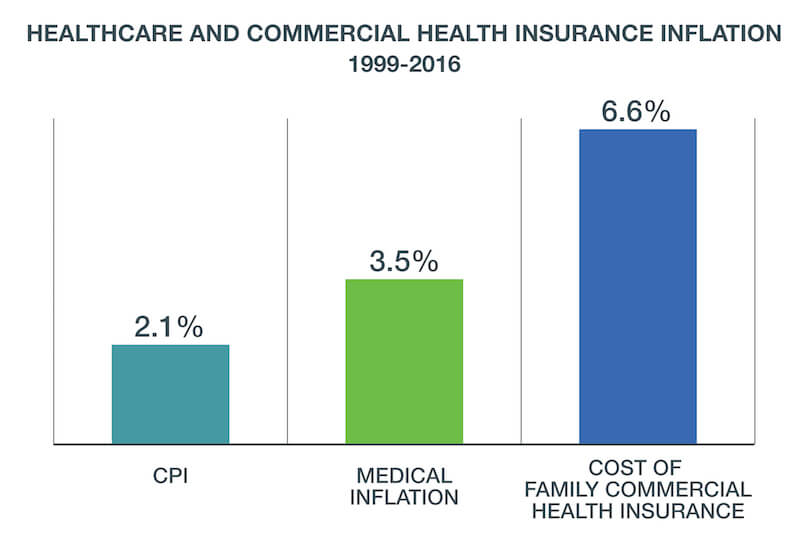
Sources: Bureau of Labor Statistics, Consumer Price Index; Kaiser Family Foundation
Among the many ironies embedded within American healthcare is that American corporations massively subsidize healthcare provision (through high-cost commercial insurance policies) and do not demand greater value for their healthcare purchases. The above chart depicts annualized inflation rates between 1999 and 2016 for the general economy, medical spending and commercial family insurance policies.
The Henry J. Kaiser Family Foundation began tracking the cost of health insurance policies in 1999. Since that time, the cost of a commercial family health insurance policy has risen at a rate more than three times higher than general inflation and almost double that of medical inflation.
As a consequence, healthcare providers have become increasingly dependent upon commercial insurance (funded primarily by self-insured employers) to offset losses generated by treating government-insured and self-paying patients. As their costs have risen, employers have shifted more of their health insurance expense to employees through higher premiums, deductibles and co-pays.

Regular Americans are straining under this increasing healthcare cost burden. During this period, wages have stagnated for working families in part because an increasing percentage of their total compensation must fund sky-rocketing health insurance premiums and healthcare costs. For this reason, Americans now worry more about healthcare costs than access.
Given the high variation in healthcare prices, even for routine services, corporations with market leverage can demand greater pricing transparency and value from the healthcare sector. Beyond direct negotiations, markets with the highest percentages of full-risk contracting (e.g. through Medicare Advantage) are vertically integrating to manage care management risk.
Consequently, all markets are not the same in healthcare. For ABJ, this has the following implications:
- ABJ can achieve higher levels of “value-based” purchasing in markets where it has the highest concentration of beneficiaries and/or in markets (e.g. Minnesota) that have higher levels of full-risk contracting.
- Managing healthcare utilization and promoting wellness will work in all markets to improve care outcomes and lower coverage costs.
- ABJ should develop enterprise-wide transparency, engagement and competitive-bidding tools to manage the healthcare needs of its beneficiaries and apply them tactically in specific markets where they can generate the highest value.
- As ABJ becomes successful in managing health expenditure, it will enable ABJ’s sponsors to redirect cost and productivity savings into higher wages and value-creating investments. This will reduce healthcare’s “drag” on organizational performance.
- Given its visibility and widely-distributed workforce, ABJ can become a powerful voice for increasing awareness regarding U.S. healthcare’s fragmentation and excessive variation in prices, outcomes and medical errors. ABJ’s “bully pulpit” should become a force for constructive system transformation.
JOBS TO BE DONE
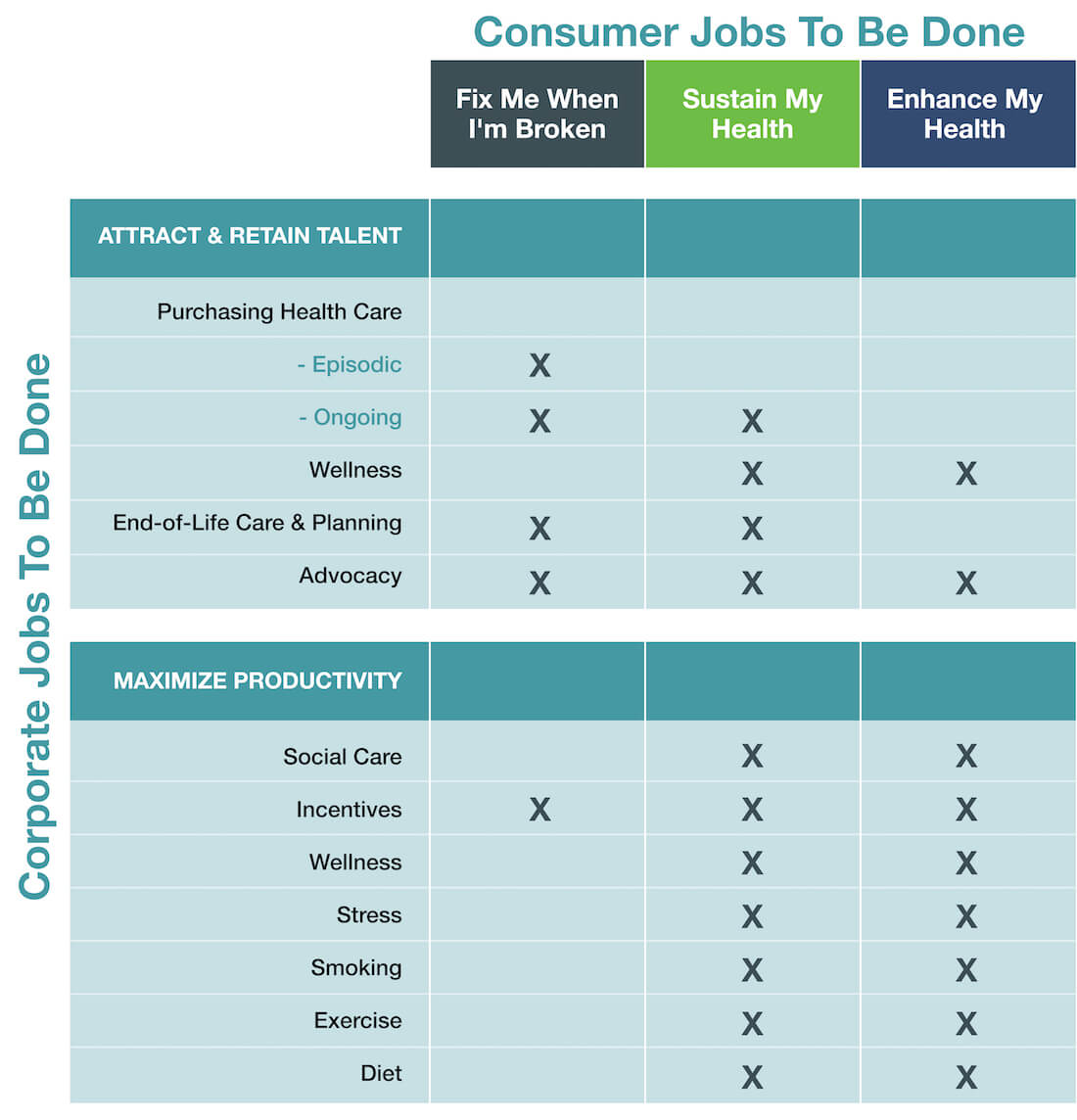
Borrowing from Clay Christensen’s lexicon, Gawande must address “jobs to be done” – the problems individuals are trying to solve – at both the individual and corporate levels. The functional matrix above identifies these “jobs” and how they intersect with one another.
Essentially, individuals have three “jobs to be done” with regard to their health and wellness:
- Fix me when I’m broken – address an acute issue to return a consumer back to their previous health status.
- Sustain my health; – support a consumer’s existing health journey, enabling them to accomplish what is important and feasible given existing health status.
- Enhance my health – enable a consumer to make the necessary changes to improve their health status.
Employers essentially have two jobs to be done, for which healthcare and benefits are potential solutions:
- Attract and retain top talent – offer health benefits as a way to effectively compete in the war for talent.
- Maximize the productivity of employees – use a series of health and wellness offerings to enable employees to be maximize the effectiveness of time spent at work.
Consumers’ first job, Fix Me When I’m Broken, falls squarely within the purview of the healthcare system – and parts of the second and third do as well.
To enable a consumer to make progress against the other two jobs, Sustain My Health and Enhance My Health, an employer must take on a broader societal responsibility. The employer must address the social determinants, which have a far greater impact on long-term health than medical treatment.
All three jobs require the active engagement of individual consumers to achieve optimal results. A heart-attack patient gets medical care in the hospital, but complying with the new medications and diet after he goes home is critical. Moving to jobs two and three, individual behavior change increases in importance.
Employers can play a key role in assisting their employees in addressing these three “jobs” more successfully through benefit design, healthcare purchasing, corporate wellness, end-of-life care/planning and advocacy.
For the most part, however, employers have not been effective purchasers of healthcare services, nor have they created wellness-oriented working environments/cultures – given perceived challenges in directly tying these investments to returns on productivity. Under Gawande’s leadership, ABJ has the ability to do both. Here are some examples how.
BENEFIT DESIGN 
Promote more holistic care coverage through benefit structures that incorporate both health and social care services. Encourage employees to seek the right care at the right time in the right place at the right price with a creative mix of financial and health-oriented incentives. Outcomes matter – capture and measure improvement in bio-metric health data. Reward those who improve handsomely.
HEALTHCARE PURCHASING
Develop high-performing networks that funnel volume to high-quality, high-value providers. Help employees make the right healthcare decisions consistently with second opinions and care navigation services to ensure employees remain within high performing networks. Make primary care easily available through on-site clinics. Pioneer technologies that support informed healthcare decision-making. Use market leverage where possible to support direct contracting for episodic care and shift care management risk to third parties.
CORPORATE WELLNESS 
Prioritize the health of the many over the healthcare for the few. Be patient, since successful corporate wellness programs require behavioral change, which takes time to engender. Create wellness programs with deep personalization to account for each individual’s unique set of circumstances and health journey.
After its launch in 2007, the Cleveland Clinic’s Wellness Institute lost money for several years before seeing meaningful declines in utilization and meaningful increases in worker productivity. Today, the Clinic has a substantially more productive workforce (many fewer days lost to illness and injury) and saves $150 million annually in health insurance premiums for its 101,000 covered lives.
END-OF-LIFE CARE/PLANNING 
Recognize that the cost and pain associated with ill-advised end-of-life care is astronomical, as is the impact on an individual’s health (and productivity). Imagine if ABJ became a model of end-of-life care planning.
ADVOCACY 
Through Gawande’s jawboning and large megaphone, ABJ could become a powerful voice for rational healthcare reforms that advance transparency, promote consumerism and champion value-based delivery.
GAWANDE’S GIFT

Trends that cannot continue won’t. American healthcare is at a major inflection point that requires full commitment to value-based delivery and community wellness. Former Cleveland Clinic CEO Toby Cosgrove observed that “the state of our nation depends upon the state of our health.”
Shakespeare’s most accomplished female character is Portia in The Merchant of Venice. In the play’s climactic trial scene, Portia (disguised as a young lawyer) pleads for Antonio’s life by pointing out the dual benefits of mercy in the following speech to the judge:
The quality of mercy is not strained.
It droppeth as the gentle rain from heaven
Upon the place beneath. It is twice blest:
It blesseth him that gives and him that takes.
‘Tis mightiest in the mightiest; it becomes
The thronèd monarch better than his crown…
ABJ’s selection of Gawande to be its CEO has the same reciprocal character. The ABJ platform gives Gawande the visibility, leverage and operating flexibility he has always wanted to improve U.S. healthcare. In return, Gawande can motivate health companies to “think different” about how it serves the American people.
In this sense, ABJ’s “gift” to Gawande can return enormous dividends back to ABJ and more broadly to American society. Reclaiming America’s health and wellness is this generation’s greatest challenge. Healthcare has a new general to help lead the charge.
Dr. Atul Gawande comes to this transformative period in U.S. healthcare with the unique mix of knowledge and skills necessary for motivating individuals to improve their health. ABJ provides a cutting-edge laboratory to develop tools, tactics and programs to advance individual and community health and wellness. This is Gawande’s moment. America needs him to succeed.
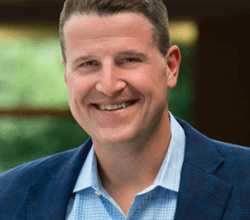
Andy Waldeck is a Senior Partner at Innosight, the strategy and innovation practice of Huron, where he leads the healthcare practice and advises senior leaders at Aetna, Baxter, Covidien, Walgreens, and other companies. Andy’s work focuses on helping clients to develop long-term growth strategies, manage enterprise transformation, build enduring growth and innovation capabilities and design new disruptive growth businesses. www.innosight.com
Prior to joining Innosight, Andy was a Managing Director at the investment bank C.E. Unterberg, Towbin, and a Vice President at GrandBanks Capital, an early stage IT-focused venture capital fund. Andy received a B.A. in Business Economics from Brown University and a M.B.A with Distinction from the Tuck School of Business at Dartmouth, where he was a Tuck Scholar.
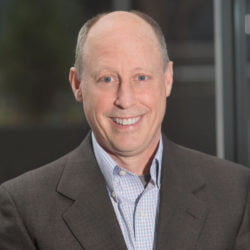
David Johnson is the CEO of 4sight Health, a boutique healthcare advisory firm. Dave wakes up every morning trying to fix America’s broken healthcare system. He is a frequent writer and speaker on market-driven healthcare reform. His expertise encompasses health policy, academic medicine, economics, statistics, behavioral finance, disruptive innovation, organizational change and complexity theory. Dave’s book, Market vs. Medicine: America’s Epic Fight for Better, Affordable Healthcare, is available for purchase on www.4sighthealth.com.





